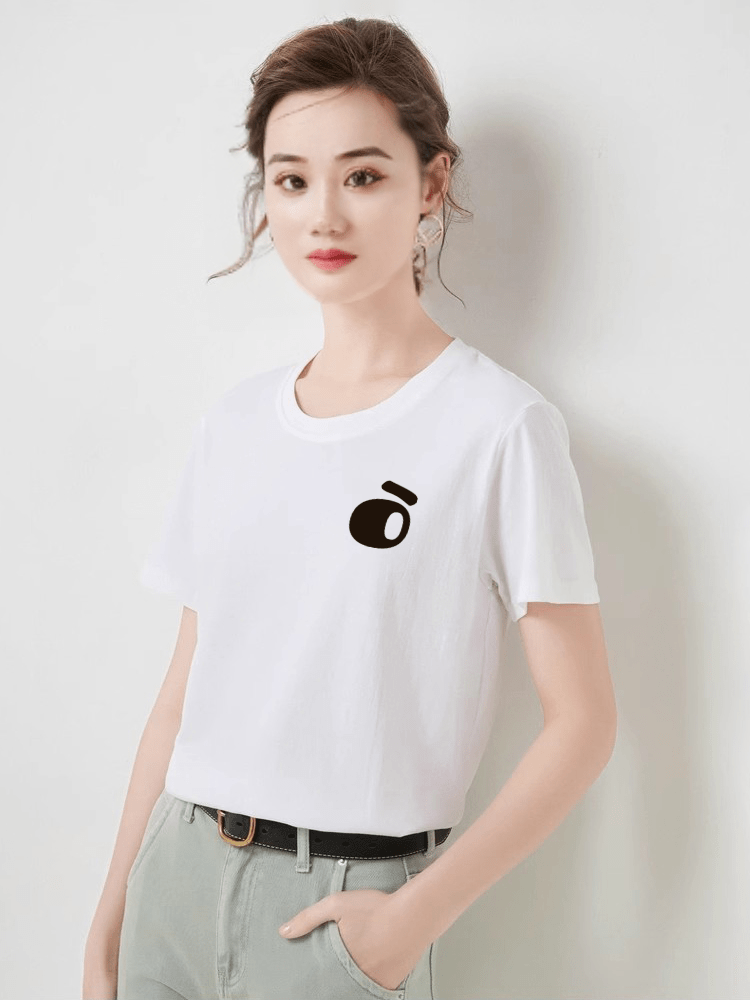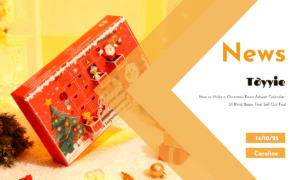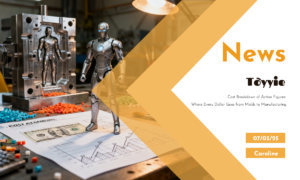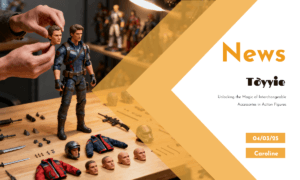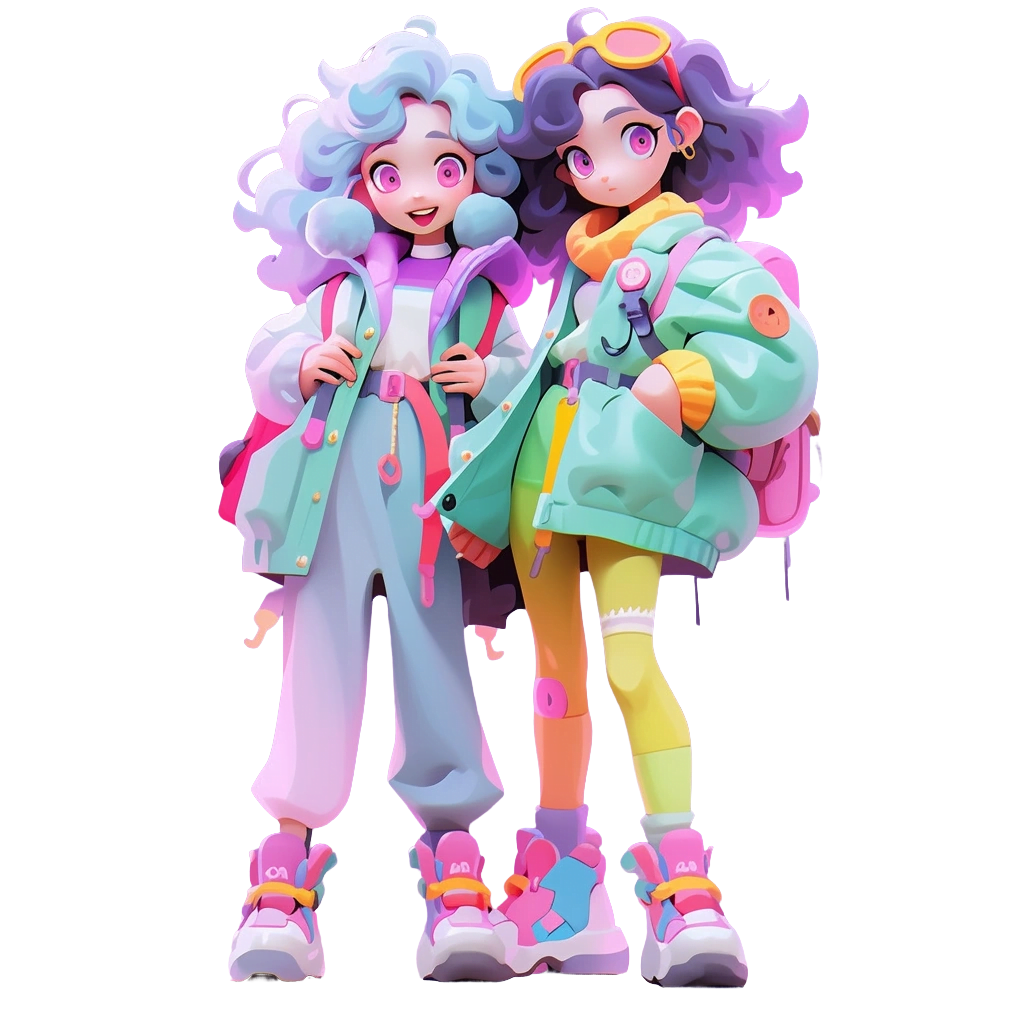📌 Introduction📌
In the world of collectible toys, action figures have long been cherished not just as static pieces but as dynamic canvases for creativity and storytelling. One of the most exciting aspects of modern action figures is their ability to transform through interchangeable accessories—be it head sculpts, weapons, or clothing. These accessories don’t just enhance the visual appeal of a figure; they unlock new dimensions of playability and display potential. As someone who has spent years navigating the intricacies of toy manufacturing, I’ve witnessed firsthand how these small details can elevate a product from a simple toy to a treasured centerpiece in a collector’s display.
The concept of interchangeable accessories isn’t new, but its execution has evolved dramatically over the years. From my early days in the industry, I remember when action figures were often limited to a single weapon or a fixed expression. Back then, collectors had to imagine different scenarios or poses based on what was provided. But today, we’re living in an era where customization reigns supreme. The ability to swap out parts allows fans to personalize their figures, creating unique combinations that reflect their own imaginations. For instance, a single action figure might come with multiple head sculpts to convey different emotions, or a variety of weapons to suit different combat scenarios. This flexibility transforms the figure into more than just a static model—it becomes a storytelling tool, a canvas for creativity, and a source of endless fun.
But why does this matter so much? Beyond the obvious appeal of variety, interchangeable accessories offer something deeper: they allow users to engage with their toys in a way that feels personal and meaningful. When you swap out a head sculpt to change your figure’s expression, or equip it with a new weapon to match a specific scene from your favorite movie, you’re not just playing—you’re crafting a narrative. You’re bringing the character to life in a way that resonates with you. And for collectors, the ability to customize their displays adds a layer of satisfaction that goes beyond simply owning a well-made figure. It’s about ownership of the story, too.
From my perspective, the magic of interchangeable accessories lies in their ability to bridge the gap between imagination and reality. They empower fans to take control of their figures, to experiment with different looks and configurations, and to create something entirely their own. Whether it’s swapping out a sleek jacket for a battle-worn cloak or switching from a neutral expression to a fierce scowl, these small changes can make a big difference in how a figure is perceived and enjoyed.
In this article, I’ll be sharing insights and strategies for designing interchangeable accessories that truly enhance the value of action figures. Drawing from my experiences in the industry, I’ll walk you through the creative process behind designing head sculpts, weapons, and clothing that not only look great but also function seamlessly. My goal is to help you understand how these elements can transform a figure into a versatile, interactive experience—one that keeps fans coming back for more. Whether you’re a designer looking to push the boundaries of what’s possible or a fan eager to learn more about the artistry behind your favorite figures, I hope this guide will inspire you to see the potential in every accessory.
🧠 Designing Head Sculpts: Capturing Emotions and Enhancing Character Depth
When it comes to designing interchangeable head sculpts for action figures, the challenge—and opportunity—lies in capturing the essence of a character through facial expressions. A well-crafted head sculpt doesn’t just add variety to a figure; it breathes life into it, allowing collectors to explore different emotional states and storytelling possibilities. Over the years, I’ve learned that the key to success in this area is striking a balance between realism, exaggeration, and functionality. Let me share some practical tips and techniques that have proven invaluable in my journey of creating head sculpts that resonate with fans.
1️⃣ Understanding the Character
First and foremost, understanding the character is crucial. Before even sketching a design, I immerse myself in the character’s backstory, personality, and iconic moments. For example, when designing head sculpts for a superhero known for their stoic determination, I focus on subtle details like a furrowed brow or a clenched jaw to convey intensity. On the other hand, for a more lighthearted or comedic character, exaggerated features like a wide grin or raised eyebrows can amplify their playful nature. This deep dive into the character ensures that each head sculpt feels authentic and true to their identity.
2️⃣ Choosing Expressions
Once the character’s essence is clear, the next step is deciding which emotions to highlight. I always aim for a mix of expressions that complement each other while offering distinct moods. A common set might include a neutral expression, an intense or angry pose, and a more relaxed or happy look. This variety allows collectors to adapt the figure to different scenes or narratives. For instance, during a project involving a warrior character, we included a battle-ready scowl, a calm but focused gaze, and a triumphant smile. Each expression told a different part of the story, giving the figure a dynamic range that collectors loved.
3️⃣ Technical Precision
Technical considerations are equally important in ensuring that head sculpts are both visually appealing and functional. One of the biggest challenges is achieving a secure fit without compromising the figure’s aesthetics. Early in my career, I encountered a situation where a beautifully detailed head sculpt kept falling off during handling. After some trial and error, I discovered that the issue lay in the joint mechanism. By slightly adjusting the diameter of the neck peg and adding a textured surface for better grip, we solved the problem without detracting from the sculpt’s intricate details. This taught me the importance of testing prototypes rigorously to identify and address potential issues early in the design process.
4️⃣ Detail Layering
Another technique I’ve found effective is layering details to enhance realism. Instead of focusing solely on large features like eyes or mouths, I pay close attention to smaller elements like wrinkles, scars, or even the texture of hair. These subtleties add depth and make the character feel more lifelike. For example, in a recent project featuring a rugged adventurer, we added fine lines around the eyes to suggest weathering and age. This small touch made a significant impact, as collectors immediately noticed and appreciated the level of detail.
5️⃣ Collaboration
Finally, collaboration with skilled sculptors is essential. While I provide the initial vision and direction, the sculptors bring the designs to life with their expertise. I recall working with a talented artist who had a knack for capturing nuanced emotions in clay. Together, we refined a head sculpt for a villainous character, experimenting with slight adjustments to the angle of the eyes and the curve of the lips until we achieved the perfect menacing glare. This partnership highlighted the importance of teamwork in achieving excellence.
By combining a deep understanding of the character, thoughtful selection of expressions, technical precision, and collaboration with skilled artists, we can create head sculpts that truly enhance the play and display value of action figures. These interchangeable pieces not only expand the storytelling potential of a figure but also deepen the connection between the collector and the character. In the end, it’s all about creating something that feels alive—a head sculpt that tells a story with every glance.
🔪 Crafting Weapons: Elevating Play Value Through Design and Versatility
When it comes to designing weapons for action figures, the goal is not just to create accessories but to craft tools that enhance the storytelling potential and play value of the figure. Weapons are more than mere props—they are extensions of the character, embodying their personality, power, and purpose. Over the years, I’ve learned that the most successful weapon designs strike a balance between aesthetic appeal, functionality, and versatility. Let me share some insights and strategies that have guided my approach to creating weapons that captivate collectors and inspire imaginative play.
1️⃣ Alignment with Character
One of the first considerations in weapon design is ensuring alignment with the character’s identity. Every weapon should feel like a natural extension of the figure it accompanies. For example, a futuristic sci-fi hero might wield sleek, high-tech blasters with glowing accents, while a medieval knight would be better suited to a finely detailed sword or battle axe. I always start by studying the character’s lore and visual style, asking questions like: What kind of weapon would they use? How does it reflect their role in the story? This foundational research ensures that the weapon feels authentic and enhances the overall narrative of the figure.
2️⃣ Versatility
Once the character’s context is clear, the next step is to think about versatility. A single weapon can be designed with multiple functions or configurations to maximize its play value. For instance, during a project involving a tactical soldier character, we created a modular rifle that could be disassembled into smaller components. These parts could then be reconfigured into a compact sidearm or attached to the figure’s backpack as a storage option. This modularity not only added depth to the figure’s utility but also encouraged fans to experiment with different setups, sparking creativity and engagement.
3️⃣ Attention to Detail
Attention to detail is another critical aspect of weapon design. Collectors appreciate intricate craftsmanship, so I always strive to incorporate fine details that elevate the weapon’s realism. This might include etched patterns on a blade, textured grips on a firearm, or even subtle wear and tear to suggest frequent use. One memorable project involved designing a fantasy sword for a warrior character. We added engravings along the blade that told a story of the character’s past battles, as well as a weathered hilt wrapped in leather. These small touches didn’t just make the weapon visually striking—they also deepened its connection to the character and the world they inhabit.
4️⃣ Functionality
Functionality is equally important, especially when it comes to how the weapon interacts with the figure. A poorly designed weapon can detract from the overall experience if it doesn’t attach securely or interferes with posing. Early in my career, I worked on a project where the weapon’s handle was too thick, making it difficult for the figure to hold it naturally. After receiving feedback from prototype testers, we redesigned the handle to ensure a snug fit while maintaining the weapon’s aesthetic integrity. This experience reinforced the importance of user testing and iterative refinement in the design process.
5️⃣ Thematic Elements
Another strategy I’ve found effective is incorporating thematic elements that tie the weapon to the broader universe of the character. For example, if the figure belongs to a specific franchise with recurring motifs, the weapon can echo those themes through its design. In one project, we created a laser pistol inspired by the neon-lit streets of a cyberpunk city. The weapon featured angular shapes and vibrant LED accents that mirrored the urban landscape, creating a cohesive visual language that resonated with fans of the genre. This approach not only enhances the figure’s authenticity but also strengthens its appeal to collectors who are invested in the franchise.
6️⃣ Collaboration
Finally, collaboration with engineers and prototypers is essential to ensure that the weapon functions as intended. While I focus on the creative aspects of the design, the technical team helps bring it to life by addressing challenges like weight distribution, attachment mechanisms, and durability. I recall working on a project where the weapon needed to light up. By partnering closely with the engineering team, we developed a solution that integrated LEDs without compromising the weapon’s structural integrity or the figure’s balance. This seamless integration of form and function resulted in a product that exceeded expectations.
By aligning weapon designs with the character’s identity, prioritizing versatility, focusing on intricate details, ensuring functionality, and collaborating across disciplines, we can create weapons that not only enhance the figure’s play value but also deepen its connection to the story and the collector. These accessories become more than just tools—they become symbols of power, creativity, and imagination, inviting fans to explore new possibilities with every interaction.
👕 Designing Clothing Accessories: Balancing Style, Fit, and Functionality
When it comes to designing clothing accessories for action figures, the challenge lies in creating garments that not only look stylish but also fit seamlessly and enhance the figure’s overall aesthetic. Clothing is a powerful storytelling tool—it conveys a character’s personality, status, and even their journey. Over the years, I’ve learned that the key to success in this area is finding the perfect balance between style, fit, and functionality. Let me share some insights and strategies that have guided my approach to designing clothing accessories that captivate collectors and elevate the figure’s display potential.
1️⃣ Character Context
The first step in designing clothing for action figures is understanding the character’s identity and the narrative they inhabit. Every piece of clothing should tell a story, whether it’s a sleek tactical suit for a futuristic spy or a rugged cloak for a medieval adventurer. I always begin by immersing myself in the character’s world, asking questions like: What materials would they wear? How does their clothing reflect their role or environment? This foundational research ensures that the clothing feels authentic and enhances the figure’s storytelling potential.
2️⃣ Material Selection
Once the character’s context is clear, the next step is selecting materials that strike a balance between realism and practicality. Action figure clothing needs to be durable enough to withstand handling while maintaining a high level of detail. For example, during a project involving a fantasy warrior, we opted for a combination of soft PVC for flexibility and fabric overlays for texture. This hybrid approach allowed us to achieve a realistic look without sacrificing the figure’s articulation. Similarly, for a sleek urban character, we used thin, glossy materials to mimic leather or synthetic fabrics, ensuring the clothing felt contemporary and sleek.
3️⃣ Fit
Fit is another critical consideration in clothing design. Poorly fitting garments can detract from the figure’s appearance and limit its poseability. Early in my career, I encountered a situation where a figure’s coat restricted movement due to its rigid material and loose fit. After consulting with our prototyping team, we adjusted the pattern to allow for greater flexibility and added elastic elements to improve mobility. This experience taught me the importance of testing garments extensively to ensure they complement the figure’s design without compromising its functionality.
4️⃣ Detail Layering
Attention to detail is what truly sets exceptional clothing designs apart. Collectors appreciate intricate craftsmanship, so I always strive to incorporate fine details that elevate the garment’s realism. This might include stitching patterns, embossed logos, or even subtle wear and tear to suggest frequent use. One memorable project involved designing a military-style jacket for a soldier character. We added patches, badges, and weathered textures to convey a sense of authenticity and history. These small touches didn’t just make the clothing visually striking—they also deepened its connection to the character and the world they inhabit.
5️⃣ Versatility
Versatility is another factor that can significantly enhance the value of clothing accessories. By designing garments that can be mixed and matched, we give collectors the freedom to create unique combinations that reflect their own creativity. For example, during a project involving a spy character, we included multiple layers such as a removable trench coat, a tactical vest, and interchangeable gloves. This modular approach allowed fans to customize the figure’s appearance to suit different missions or scenarios, sparking endless possibilities for storytelling and display.
6️⃣ Collaboration
Collaboration with skilled pattern makers and fabricators is essential to bring these designs to life. While I focus on the creative aspects of the clothing, the technical team ensures that the garments are constructed with precision and care. I recall working on a project where the character’s outfit required intricate embroidery. By partnering closely with the fabrication team, we developed a solution that integrated the embroidery seamlessly without adding bulk or interfering with the figure’s articulation. This attention to detail resulted in a product that exceeded expectations and delighted collectors.
Finally, it’s important to consider how the clothing interacts with the figure’s accessories and poseability. A well-designed garment should complement the figure’s articulation points, allowing for dynamic poses without bunching or restricting movement. During a recent project, we designed a flowing cape for a superhero character. By strategically placing slits and using lightweight materials, we ensured that the cape moved naturally with the figure’s movements, enhancing its dramatic presence without hindering functionality.
By balancing style, fit, and functionality, we can create clothing accessories that not only enhance the figure’s aesthetic appeal but also deepen its connection to the character and the story. These garments become more than just costumes—they become symbols of identity, creativity, and imagination, inviting fans to explore new possibilities with every interaction.
🧩 Enhancing Play and Display Value: Strategic Integration of Accessories
As we delve deeper into the world of action figure design, it becomes increasingly clear that the strategic integration of accessories plays a pivotal role in elevating both the play and display value of these collectibles. From my extensive experience in the toy manufacturing industry, I’ve observed that the true magic happens when head sculpts, weapons, and clothing are thoughtfully combined to create a cohesive and immersive experience. This synergy not only enhances the figure’s versatility but also amplifies its storytelling potential, making it a cherished centerpiece in any collection.
1️⃣ Customization
One of the most effective ways to integrate accessories is by ensuring that each element complements the others while offering distinct possibilities for customization. For example, consider a character equipped with multiple head sculpts, a variety of weapons, and interchangeable clothing. By carefully coordinating these components, collectors can create unique combinations that reflect different scenarios or emotional states. Imagine a warrior figure with a battle-worn cloak, a fierce scowl, and a dual-wielded sword setup. This configuration immediately evokes a sense of intensity and action, perfect for recreating epic combat scenes. On the other hand, swapping the cloak for a sleek jacket, the scowl for a calm expression, and the swords for a single blaster transforms the figure into a stealthy operative ready for covert missions. These dynamic possibilities keep fans engaged and encourage them to explore the full potential of their figures.
2️⃣ Display Value
Beyond customization, the integration of accessories also enhances the figure’s display value. Collectors often seek figures that can be posed and displayed in ways that capture their imagination. By designing accessories that interact seamlessly with the figure’s articulation points, we enable fans to create dynamic poses that bring their displays to life. For instance, a flowing cape that moves naturally with the figure’s movements or a weapon that attaches securely without restricting poseability adds a layer of realism and drama to the display. I recall a project where we designed a figure with a detachable jetpack. Not only did the jetpack enhance the character’s visual appeal, but it also allowed collectors to pose the figure mid-flight, creating a sense of motion and energy that elevated the entire display.
3️⃣ Narrative Coherence
Another key aspect of accessory integration is ensuring that each piece contributes to the overall narrative of the figure. Accessories should not feel like afterthoughts but rather integral parts of the character’s identity. For example, a detective figure might come with a trench coat, a magnifying glass, and a notebook. Each accessory tells a part of the story, reinforcing the character’s role and purpose. This narrative coherence not only deepens the connection between the collector and the figure but also enhances the figure’s replay value. Fans can revisit the same figure multiple times, discovering new ways to interpret and display it based on the accessories provided.
4️⃣ Community Engagement
Moreover, the integration of accessories can also foster a sense of community among collectors. When figures are designed with interchangeable parts that can be shared or swapped with other figures in a series, it creates opportunities for collaboration and creativity. I’ve seen fans online sharing photos of their custom combinations, inspiring others to try new setups and configurations. This shared enthusiasm not only strengthens the bond between collectors but also extends the lifespan of the figures, as fans continue to find new ways to enjoy them.
5️⃣ Practical Benefits
From a manufacturing perspective, integrating accessories strategically also offers practical benefits. By designing modular components that can be reused across different figures or series, we can streamline production processes and reduce costs. For example, a standard weapon design might be adapted for multiple characters, or a universal joint system could allow for seamless attachment of various accessories. This approach not only ensures consistency in quality but also maximizes resource efficiency, allowing us to deliver high-value products to our customers.
In conclusion, the strategic integration of accessories is not just about adding variety—it’s about creating a holistic experience that enhances the figure’s play and display value. By thoughtfully combining head sculpts, weapons, and clothing, we can transform a static model into a dynamic storytelling tool that captivates collectors and inspires endless creativity. These accessories become more than just additions—they become essential elements that define the character, enrich the narrative, and deepen the connection between the figure and its owner. Whether you’re a designer looking to push the boundaries of what’s possible or a collector eager to explore the full potential of your figures, the power of accessory integration cannot be overstated.
🖌️ Reflections on the Art of Accessory Design: Bridging Imagination and Reality
Throughout this exploration of designing interchangeable accessories for action figures, one truth has become abundantly clear: the smallest details often carry the greatest impact. From head sculpts that capture the nuanced emotions of a character to weapons that extend their power and purpose, and clothing that defines their identity, each accessory serves as a building block in the larger narrative of the figure. Reflecting on the insights shared earlier—from understanding character identity to prioritizing functionality and fostering creativity—I am reminded of the profound interplay between imagination and craftsmanship. These elements do not exist in isolation; they converge to create something far greater than the sum of its parts.
The true art of accessory design lies in its ability to bridge the gap between the creator’s vision and the collector’s experience. When done well, accessories transform a static figure into a dynamic canvas for storytelling. They invite fans to step into the shoes of their favorite characters, to reimagine scenarios, and to craft their own narratives. I’ve seen this firsthand in projects where a single figure, equipped with a range of accessories, sparked endless hours of play and display experimentation. It’s a reminder that these small components are not just add-ons—they are catalysts for creativity, connection, and joy.
For designers, the journey of creating accessories is both a challenge and a privilege. It requires a deep understanding of the character, meticulous attention to detail, and a commitment to pushing the boundaries of what’s possible. Yet, it also offers immense rewards. There’s nothing quite like seeing a collector’s face light up when they discover the versatility of a figure or hearing their excitement as they share their custom combinations online. These moments reaffirm the value of thoughtful design and remind us why we do what we do.
For collectors, the appeal of interchangeable accessories lies in their ability to personalize and expand the potential of their figures. Whether it’s swapping out a head sculpt to match a specific mood or equipping a weapon to recreate a favorite scene, these small changes allow fans to take ownership of their collections. They transform a figure from a mere object into a reflection of their imagination and passion. This sense of agency is what makes collecting action figures such a deeply rewarding experience.
As we move forward in this ever-evolving industry, I encourage both creators and collectors to embrace the limitless possibilities of accessory design. For designers, continue to innovate, experiment, and collaborate. Push the boundaries of materials, mechanics, and storytelling to create accessories that surprise and delight. For collectors, don’t be afraid to experiment with your figures. Mix and match accessories, explore new configurations, and share your creations with the community. Together, we can continue to elevate the art of action figure design, creating products that inspire wonder and ignite the imagination.
In closing, the journey of designing interchangeable accessories is a testament to the power of creativity and collaboration. It’s a reminder that even the smallest details can make the biggest difference, transforming a simple toy into a cherished masterpiece. Whether you’re holding a figure in your hands or dreaming up the next great design, remember that the magic lies in the details—and in the stories they help bring to life.


